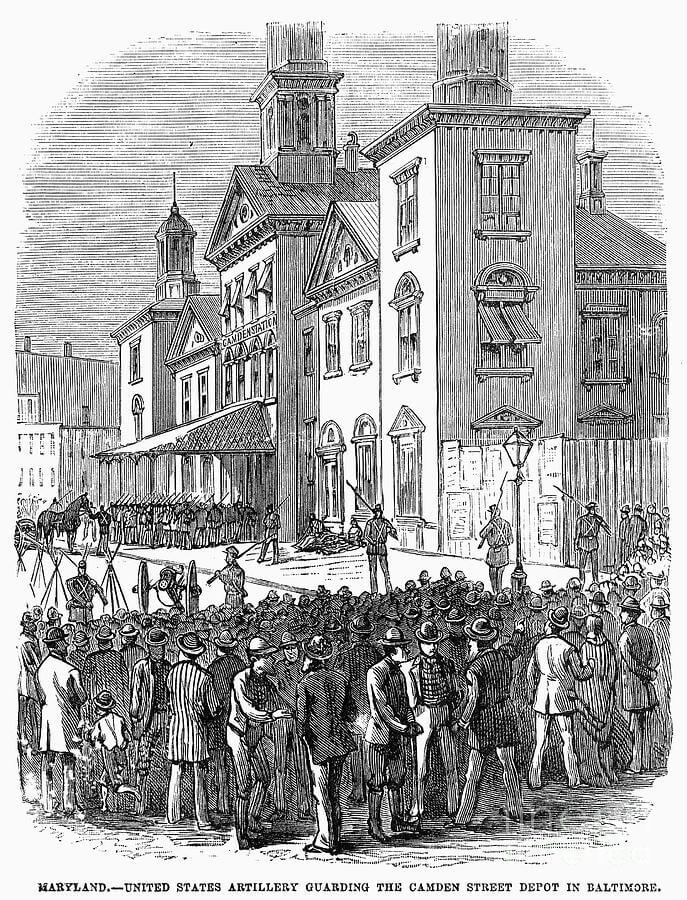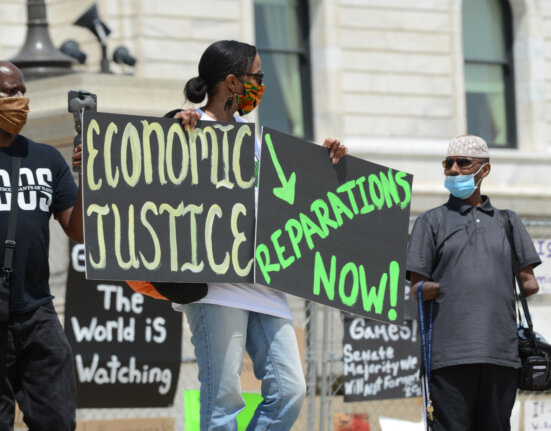As LAWCHA members know, contemporary unionism is almost invisible—union members usually don’t show T-shirts or bumper stickers and certainly not yard signs proclaiming “Proud Union Family.” Union history is equally uncelebrated so each of us needs to promote public displays of the movement’s history.
When I spoke at a gathering of the Occupy Movement in Baltimore 2011, I mentioned that we were on hallowed ground because the original “occupy” movement in Baltimore City occurred in 1877, when tens of thousands of railroad workers carried on the first national strike, shutting down all freight traffic and giving new meaning to the term “reconstruction.” The strike started on July 16, 1877, against the B & O Railroad and the first strike demonstrations were in front of the company’s main depot at Camden Yards, now the city’s baseball stadium.

One aspect of the strike was the military opposition to the strikers, first from state militia in Maryland and West Virginia, and then by federal troops ordered out by President Rutherford B. Hayes, who had been elected, in part, for his commitment to withdraw all federal troops from the states. In a devastating moment, 11 citizens were murdered by the militia near City Hall as the troops tried to march from the armory across from the Shot Tower in East Baltimore to Camden Yards.
Since this movement is virtually unknown in Baltimore—the local public library catalogues its documents under “The Riots of 1877”—I decided to propose a historical marker in front of Camden Yards, honoring the strikers and their community. There is only one other workers history marker in Maryland, “Mother Jones, Champion of Labor,” erected in Adelphi, MD.
The process for applying for a new marker is available at the site for The Maryland Historical Trust. While proposals generally have to get approval from the State Highway Administration, this one also had to pass The Maryland Stadium Authority because of its unique location. In addition to the usual historical support, I also turned in several dozen letters from high school teachers across the country, who participated in a workshop in July, 2011, about the strike.
My “partners” is this project: Nancy Kurtz from the Historical Trust and Jan Hardesty, from the Stadium Authority—were wonderful and a process that I was warned could take years was completed in about six months.
The state cast (and paid for) the marker, using language I proposed, and the unveiling will be a great event. There will be a reception after the unveiling at The Irish Railroad Workers Museum on Lemon Street, across from the B & O Museum. For more information, contact me at billbarry21214@gmail.com








